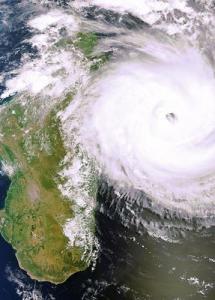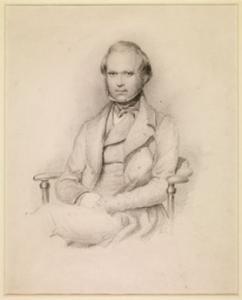On science blogs this week: Risky
TAKE ME TO YOUR LEADERS. Jill Tater, who heads the search for extraterrestrial intelligence at the SETI Institute in, where else, California, has a piece in New Scientist urging a seti focusing on the exoplanets being discovered daily by the Kepler Space Telescope. Oh, and she'd like money to do this, please.
Tater has suggestions about what to look for and is the co-developer of the Rio Scale, a formal mathematical system for quantifying how important any potential ET signs might be. At Social Dimension, Samuel Arbesman describes the Rio Scale, pointing out that whatever evidence turns up will be ambiguous at best. He also points out that even the monolith in 2001: A Space Odyssey rates only a 6 ("Noteworthy") on the 10-point scale. (A 10 is Extraordinary.)
Then there is the problem of figuring out what we might say to an alien. At Re-Envision, Daniel Honan interviewed Bill Nye the Science Guy (who has moved on to head the Planetary Society.) In the video, Nye suggests that we tell ET that our species has existed for about 100,000 orbits and ask them what their orbital story is and what they want of us. In English.
These suggestions bypass the question of just how we will achieve this conversation. There are many hurdles before we get to the stage of mutually intelligible English. The suggestions also sidestep the much more immediate question, which is how to finance this quest. It appears the state of the US budget, and in particular the especially parlous state of the budget for space exploration, give us plenty of time to leap the hurdles and teach the aliens other useful English besides "Phone home."
TAKE ME TO YOUR LEADERS TO BEG FOR MONEY. At Bad Astronomy, Phil Plait mourns deeply over the proposed cuts at NASA. Cutting the NASA budget at all, he says, is simply dumb. His word. The James Webb Space Telescope is getting a 21% increase, partly because Mars exploration funding has been slashed by well over a third.
[P]lanetary exploration has gotten creamed. Its budget overall drops from $1.5 billion to $1.2, a very deep cut that doesn’t just threaten but destroys near-future Mars exploration as well as future big grand missions to the outer planets in the tradition of Voyager, Cassini, and others.
He urges fighting the cuts with political persuasion and aiming for much bigger alternative targets for cuts.
Over the past few years, the rate of money spent in Afghanistan and Iraq is about 20 million dollars per hour. In other words, the amount of money being cut from Mars exploration is equal to what we were spending on the War on Terror in just 15 hours ... For the cost of less than a single day on the War on Terror, we could have a robust and far-reaching program to explore Mars, look for signs of life on another planet, increase our overall science knowledge, and inspire a future generation of kids.
See also his post and video "Why spend money on NASA" and the many comments that critique — and augment — his arguments.
GRAPHICALLY BAD SCIENCE. There seems to be no end to the revelations about bad science. The most recent examples discussed here late last year come from the social sciences.
And who would have predicted that Adam Marcus and Ivan Oransky could fashion a thriving, busy blog from news about retractions of scientific papers? But, sign of the times, Retraction Watch has much to report on. They post nearly every day. This may actually be encouraging, a sign that journals are much more willing to disown dishonest and even dubious papers than in the past.
Bad as it is, bad science has now been caricatured and mischaracterized by — well, I guess you might call it bad infographics, cited by Earle Holland at On Research. The graphic he discusses leads off with the dubious claim "Shady Scientific Research is Rampant" and proceeds with other unpleasant but mostly unfounded assertions. Earle points out that the claims graphic artist Tony Shin makes are not linked to supporting material and notes
Yes, at the tail end of the graphic, he lists “references,” but only two of those link to actual scholarly studies. The rest point to news stories from the mainstream media, opinion columns from magazines, a blog or two and even a commentary from a Minnesota “alternative newspaper.”
Earle's analysis of the many ways in which this graphic twists and/or misstates the nature and degree of science shenanigans is largely sound. He's also quite right to dismiss one of Shin's solutions to bad science, which is to allow scientists to publish their work anonymously. Like Earle, I'm baffled about why Shin doesn't see that anonymity would mean researchers would have no reputations to protect. The result would likely be bad science not just rampant, but run amok.
But I don't agree with Earle that what counts as bad science includes only the three kinds of misconduct defined by the government's Office of Research Integrity: fabrication, falsification or plagiarism. As examples from social science illustrate so blatantly, there are plenty of fairly common research practices that lead to bad science but don't fit the formal definition of misconduct, even though some of them are at least borderline naughty. Examples: altering a research protocol during a study, statistical approaches that bias a study toward positive results, and the near-universal failure to publish negative results.
Much of the time I manage to wring comfort out of these depressing tales. It is good, unquestionably, that bad science in all its variety — not just narrowly defined misconduct — be outed and publicly reviled. OTOH, it's hard not to cringe at all the ammunition the smarmy disclosures have handed to science's enemies.
PHYSICIAN, HEAL THYSELF. TO SAY NOTHING OF PRIMUM NON NOCERE. Of course it's not only scientists who deceive. So do docs, as revealed in a 2009 survey of nearly 1900 physicians by the journal Health Affairs. One in ten acknowledged lying to patients in the previous year. One in three does not believe in disclosing medical errors. More than half the sample said they had painted rosy scenarios when a prognosis didn't warrant it. And other dispiriting admissions.
And these things are just what physicians were willing to acknowledge. Read it and weep at Chris Fleming's post on the Health Affairs Blog. Also other places, for example Jessica Marcy at Kaiser Health News's Capsules and Katherine Hobson at the Wall Street Journal's Health Blog. At Boston.com's Daily Dose, Deborah Kotz quoted one of the study's authors thus:
“Only 11 percent of physicians reported saying something untrue to patients over the past year,” he said, “which I suspect is much higher.” The doctors were not asked what they lied about.
PEOPLE WHO LIVE IN GLASS HOUSES SHOULD BEWARE OF CLIMATE CHANGE. Science's enemies have not limited themselves to real cases of scientific malfeasance. Think back not so long ago to Climategate, in which the bad guys managed to contort innocuous emails of climate scientists into towering conspiracy fantasies that have since been thoroughly discredited.
Now they may be experiencing the risks of rock-slinging in fragile domiciles . Phil Plait has a lot to say about that, too. Seems there has been an anonymous release of emails purporting to be from the Heartland Institute, a hotbed of (and funding source for) climate change deniers that was involved in Climategate. Among the revelations of the new documents are plans to develop curriculum modules for secondary schools, material designed to present climate issues as major scientific controversies when they are not, for example whether people are causing global warming.
The documents will be juicy if they prove to be authentic (and of course if they aren't, that will be juicy too.)
At Dot Earth, Andrew Revkin's long post includes background on Heartland, links to other posts, and updates. One of the links is to Quark Soup, where David Appell says that at least the strategy document that Heartland has declared to be a fake looks suspicious to him, too.
Detailed analysis is provided by Ros Donald at The Carbon Brief. Both Donald and Brad Plumer at Wonkblog point out that the strategy memo, even if faked, contains points that are confirmed in the other documents, which have so far not been challenged.
At Watts Up With That, Anthony Watts crows about what he calls "Fakegate" and links to several other takes on it. One of them is to the very high-profile Judith Curry at Climate, Etc., who has posted long lists of links pro and con, along with comments of her own. Curry's remarks address mostly the proposals for secondary schools and Heartland's funding of individuals. Hundreds and hundreds of reader comments.
This is not winding down yet, obviously.
BRIEF SCIENCE BLOG LINKUPS FOR 2012 WEEK 7
To celebrate his birthday last Sunday, the American Museum of Natural History has begun to post Charles Darwin's scientific manuscripts online. Nearly 7500 pages so far, and counting. Free, of course.
Bad Astronomy was exceptionally good astronomy this week. In addition to the links cited above, see also Phil Plait on a new study that seems to show dark matter everywhere, even in the (former?) voids between galaxies. Plait gets credit too for the image of cyclone Giovanna above.
Jonah Lehrer on risky business: how Wall Street traders use their dopamine genes at Head Case
VIDEOS OF NOTE.
At Technology Review's Hello World, Quadrocopter ball juggling. Scroll down to the bottom of the iPad stuff.
Five glorious minutes of the recent aurora borealis embedded at Andrew Sullivan's blog The Dish. Is this what Van Gogh would have painted had he lived in Norway?





